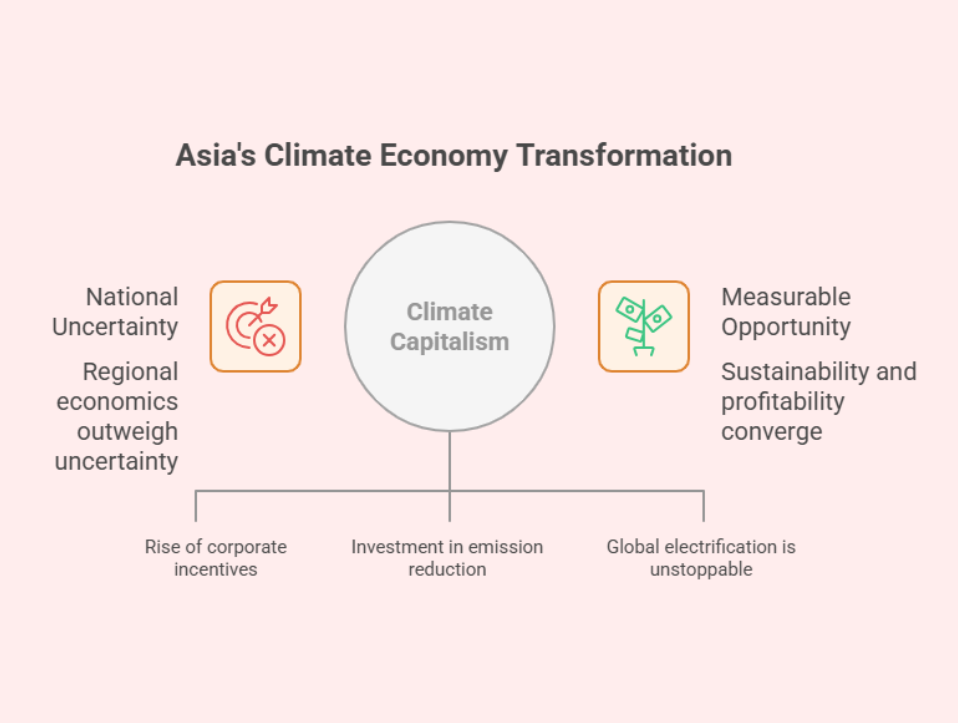Power Generation, Renewables & Grid Solutions
In India, solar installations and battery storage are expanding at record pace, driven not by subsidies but by price competitiveness. Vietnam has extended renewable energy auctions through 2030, while Japan has revived bids for floating offshore wind to balance consumer costs with clean-energy ambitions by decade’s end.
China’s photovoltaic buildout continues to exceed forecasts, while South Korea accelerates investment in small modular nuclear reactors. In Pakistan, households and businesses are rapidly adopting solar-plus-battery systems to secure affordable, reliable electricity, aligning with the national target of 60% renewable energy by 2030.
Each example underscores a clear truth: regional economics now outweigh national uncertainty.
Manufacturing & Production Methods
As national momentum slows, local and corporate incentives rise. Steelmakers in India, electronics manufacturers across Southeast Asia, and battery producers in Indonesia and Thailand are re-engineering heavy industry for a low-carbon future.
Recent industrial policies have triggered a wave of factory developments stretching from China’s Yangtze River Delta to Vietnam’s northern provinces and Malaysia’s Penang hub.
In Pakistan, the first Green Sukuk issuance and clean-technology deployment policies are drawing new investment into emission reduction projects. The recently launched Pakistan Green Taxonomy offers a clear framework for sustainable financing, enabling banks and industries to align with global ESG benchmarks.
These plants and policies are not political trophies; they are resilient industrial assets built to withstand policy swings and global supply chain shocks.
Transit & Urban Movement
Even as national EV programs face funding freezes, global electrification is unstoppable. In the first half of 2025, China’s electric vehicle sales exceeded total European car sales, a symbolic shift in the mobility epicenter.
Across Southeast Asia, tightening emission standards are transforming supplier networks. Indonesia’s new fuel rules have expanded biofuel output, while major cities — from Mumbai to Jakarta — are electrifying delivery fleets and short-haul logistics.
In Pakistan, the 2025–26 budget introduced the New Electric Vehicle Adoption Levy and Climate Support Levy, setting a national goal of 30% EV adoption by 2030. Efforts to build resilient mobility infrastructure continue despite disruptions from flooding and extreme weather.
The evolution of transport across Asia has become truly borderless, guided by global market momentum rather than policy mandates.
The Era of Climate Capitalism
Asia’s climate economy is moving beyond rhetoric into measurable opportunity. The shift is not ideological, it’s economic. Markets now reward those who cut emissions while creating value.
This is Climate Capitalism: a landscape where sustainability and profitability converge,
where innovators solve real-world challenges with scalable technologies and verifiable returns.
The frontrunners of this era are not waiting for permission. They are building the infrastructure, data systems, and partnerships that define tomorrow’s low-carbon economy.
Skip the political noise. Follow the momentum. Invest in the builders of Asia’s sustainable future.


No responses yet